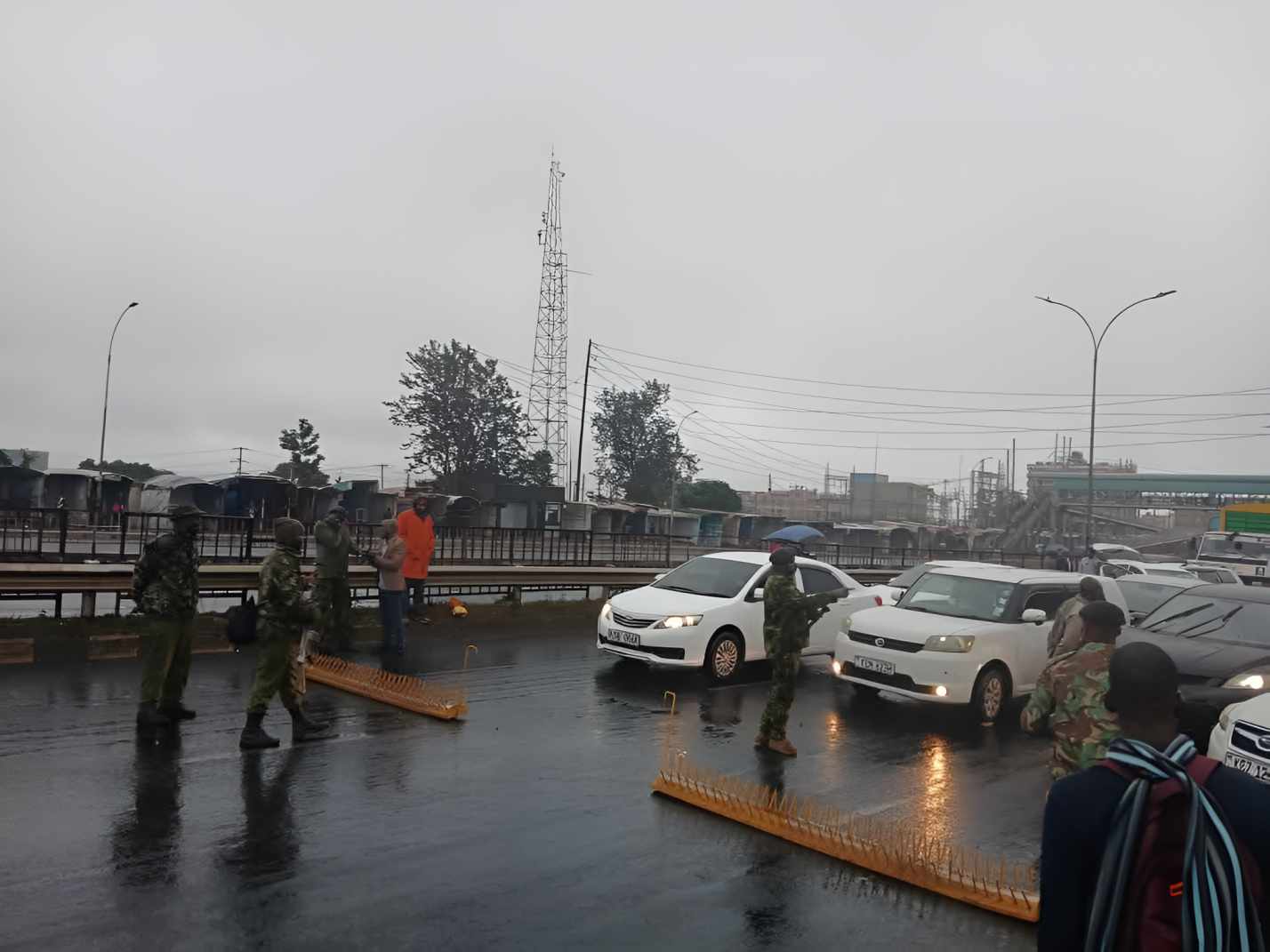A day that began like any other turned into a transport nightmare for millions of Kenyans as widespread road closures and heavy police presence crippled movement during the Saba Saba demonstrations.
Matatu operators, who form the backbone of daily transport, say they lost close to Sh800 million within hours after being forced off the roads across the country.
In Nairobi, access to the city centre was blocked at multiple points.
For many Kenyans, especially those with urgent hospital visits, job commitments, or daily business errands, it was a day of helplessness. Long stretches of road remained deserted, with only security vehicles and a few private cars allowed through after strict questioning.
“We didn’t expect that the government is going to block the roads because we had been assured that Saba Saba will be just a normal working day. We woke up expecting to work as usual,” said Wilfred Bosire, Secretary General of Mass Mobility Operators.
Bosire added that while the country has seen protests in the past, the scale of disruption on this particular day was unprecedented.
“The sector alone is a multi-billion business. We incurred losses of between Sh800 million to Sh1 billion. We have had demonstrations before and it had not reached a point that we were unable to operate,” he said.
Transport was paralysed not just in the capital, but across nearly every county. Highways such as Nakuru-Nairobi, a major route linking several towns, were shut down, bringing businesses and livelihoods to a halt.
Matatu Welfare Association Chairman Dickson Mbugua said that such disruptions hit the sector hard, especially operators who depend on daily income to repay vehicle loans.
“Most roads were closed as early as 4am. When public transport is affected, the economy grinds to a halt because most people rely on our services,” he said.
He criticised the way the demonstrations were handled, urging the government to listen to the public instead of shutting down movement. “The best way to avoid this kind of instability is for the current leadership to address the real issues Kenyans are trying to raise,” said Mbugua.
He noted that Saba Saba has been marked in Kenya for more than 30 years without such intense disruption. “If we were able to resolve such issues then, why not now? Our current leadership must understand that engaging the public is not an act of weakness. In fact, it would earn the President praise across the world,” he added.
The shutdown also hit the railway system. Kenya Railways announced the suspension of its Mombasa–Nairobi passenger service, a move seen by many as tied to the protests. But Managing Director Philip Mainga dismissed that link, saying the interruption was caused by a technical issue and that safety remains their top concern.
On the ground in Nairobi, key locations along Thika Superhighway were closed off. Protesters attempting to walk to the CBD were blocked at major junctions like Kahawa Sukari, Githurai, Roysambu, Allsops, Ruaraka, and near Guru Nanak Hospital. Police also blocked roads around the Kenya Institute of Education and Globe Cinema Roundabout.
Officers used tear gas and fired into the air to disperse crowds trying to push through. At Ruaraka junction, protests briefly turned chaotic as demonstrators insisted on marching toward town.
Shops and supermarkets around the Mountain Mall area remained closed, including Naivas, Quickmart and Magunas, which had previously suffered damage during the June 25 protests. Malls, colleges, restaurants, and businesses also stayed shut, fearing a repeat of the earlier violence.
Outside Aga Khan Hospital, which is housed in Al Akai Plaza, private guards from Olosho Security Services were stationed with traditional weapons, including bows and arrows, as a precaution. Protesters along the highway demanded handouts from the few drivers who were allowed to pass, before letting them through.
As normal life ground to a halt and losses piled up, transport leaders warned that continued shutdowns of this nature would have long-term effects on the economy and called for a shift in how the government responds to national dissent.
